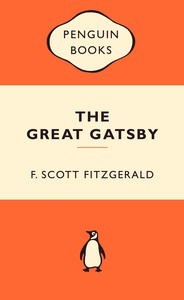 Staff Review by Chris Saliba
Staff Review by Chris Saliba The Great Gatsby shows the decay left after decadent living and the pursuit of pleasure, but leaves no great moral lessons for the reader.
Francis Scott Fitzgerald (1896-1940) wrote four complete novels, with the unfinished The Last Tycoon published posthumously in 1941. The Great Gatsby (1925) was his third novel, and is his most famous work. F. Scott Fitzgerald was also a prolific short story writer. He died young, in his early forties, having spent most of his years wreaking havoc on his health through alcoholism.
A Rich and Strange Novel
The theme of the novel is hard to decipher. It tells the story of the mercurial Jay Gatsby, whose glittering lifestyle it appears is built on a past of shady business dealings. In the Wildean manner, he is a self-made man:
“The truth was that Jay Gatsby of West Egg, Long Island, sprang from his Platonic conception of himself. He was a son of God – a phrase which, if it means anything, means just that – and he must be about His Father’s business, the service of a vast, vulgar, and meretricious beauty. So he invented just the sort of Jay Gatsby that a seventeen-year-old boy would be likely to invent, and to this conception he was faithful to the end.”
Gatsby is in love with Daisy Buchanan, who is married to the jerk Tom Buchanan. Tom in turn is having an affair with Myrtle Wilson. All these love affairs come out eventually, during an ugly scene, but Daisy does not seem to be able to figure out who she really loves. What all of these haphazard and desultory relationships mean is not clear, as no one seems particularly committed to anyone. The ‘grand passion’ of the novel is supposed to be between Gatsby and Daisy, but Gatsby seems too glib to be passionately involved with anyone.
Fitzgerald here encapsulates why it’s hard to feel much, if any, sympathy for his characters:
“They were careless people, Tom and Daisy – they smashed up things and creatures and then retreated back into their money or their vast carelessness, or whatever it was that kept them together, and let other people clean up the mess they had made…”
The Great Gatsby shows the decay left after decadent living and a lack of traditional social values (the powerful American economy has left everyone fabulously wealthy, but empty), yet the detritus of the Jazz Age Fitzgerald describes does not leave any interesting relics.
The Great Gatsby, by F. Scott Fitzgerald. Published by Penguin. ISBN: 9780141037639 RRP: $9.95
No comments:
Post a Comment